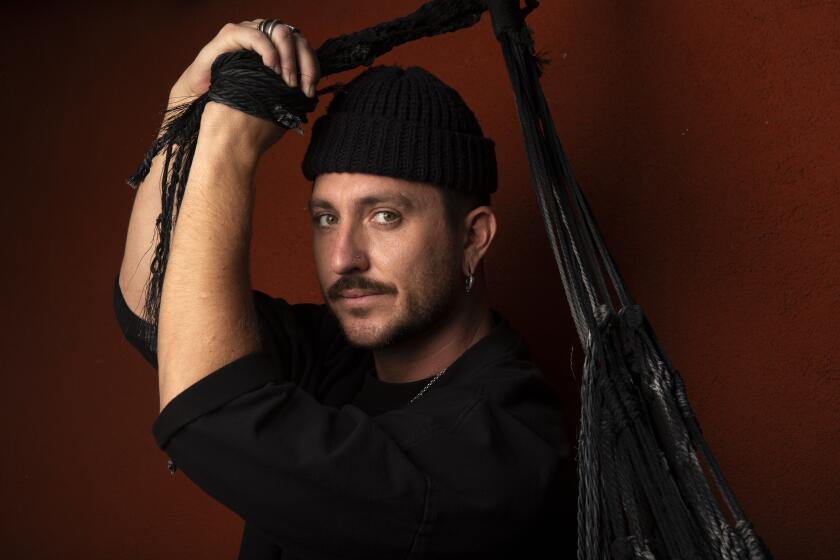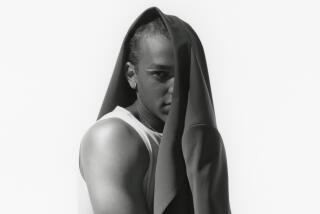Our fashion critic reviews ‘Making the Cut’s’ winning looks: ‘rug-dress redemption’
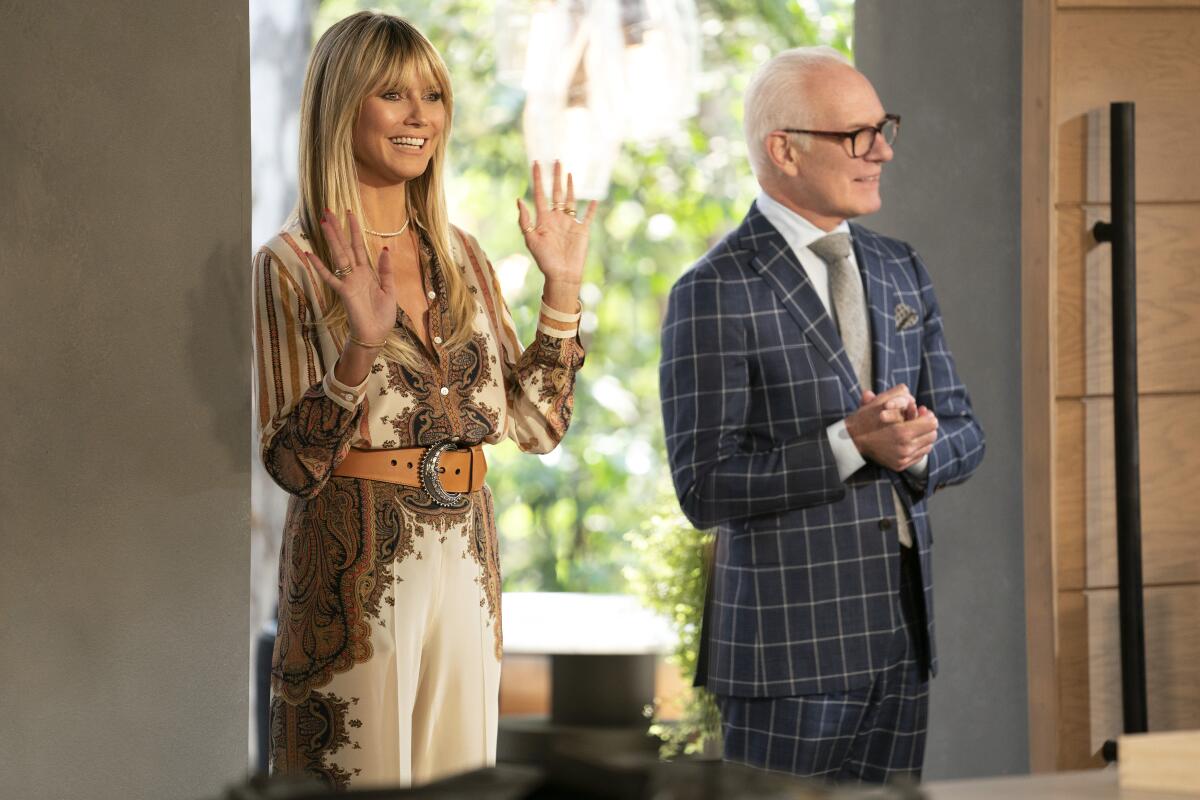
The following story contains spoilers from the first and second episodes of Amazon’s “Making the Cut” Season 2. Read our interview with Season 1’s winner here.
Amazon’s fashion-runway-to-cash-register reality series “Making the Cut,” which minted L.A.-based designer Jonny Cota the winner of its inaugural season, is back and beaming into your home (assuming your home has Amazon Prime). As with last season, which debuted last March just days after the COVID-19 pandemic shut down the world, two episodes will drop every week, with each episode’s limited-edition winning look available for purchase on Amazon’s “Making the Cut” page. (In response to last season’s brisk sell-through — some items were gone almost immediately, most in a couple of days — the producers note there will be “increased availability” this time around.) The ultimate prize also remains the same: In addition to the kind of exposure only reality TV can offer, the winner will take home $1 million and a mentorship with Amazon Fashion. And Tim Gunn and Heidi Klum are back as hosts oozing their palpable co-worker chemistry.
There some notable changes too. The number of contestants has been pared back slightly — from 12 to 10 — as has the total number of episodes — from 10 to eight. There are also new fashion-insider judges: Canadian-born supermodel Winnie Harlow and L.A.-based designer and Moschino creative director Jeremy Scott are on deck at the outset, with designer Prabal Gurung and celebrity stylist Shiona Turini set to appear as guest judges in upcoming episodes.
One of the biggest changes, though, is the location. Instead of jetting around the globe to multiple high-profile fashion capitals (last season’s locales included Paris, Tokyo and New York City), Season 2 was filmed entirely in the L.A. area, with Malibu’s Calamigos Ranch serving as home base — or, as Klum calls it in the season’s first episode, a “fashion bubble.”
We speak with the winner of Amazon’s fashion competition “Making the Cut” about halo effects, career boosts and judge Naomi Campbell.
Episode 1: Bewildering bathrobes and rug-dress redemption
The contestants’ first task in the bubble is to whip up two brand-statement looks — one runway and one accessible — capturing “an ethos,” as Gunn puts it, “that embodies and defines [every successful] brand.” The “getting-to-know-you challenge” is about as softball as it gets. Any designer who has sent clothes down a runway even once should be able to distill their point of view, their vibe, into a couple of solid pieces. They also should be able to articulate it, which is why one-on-one interviews with Vogue Business innovation editor Maghan McDowell factor into the judges’ decisions. Given that all 10 contestants are established designers, it’s not surprising that most managed both sides of the challenge well enough not to merit mention. But there were a few disconnects.
One was Lendrell Martin, a designer with more than a decade of experience under his belt. He was able to describe his eponymous men’s and women’s brand for the cameras with aplomb as “focusing on tailoring, texture and craftsmanship”— about as succinct a point of view as one could hope for. On top of that, he answered McDowell’s brand-identity question as easily as one might answer the phone. The only hitch? The judges didn’t see it in what Martin sent across the catwalk. The accessible look, worn by a male model, paired highwater-cuffed khakis with a white, pleated bib-front dress shirt that Klum described as “just a shirt and a pair of pants that we don’t need to have.” The runway look that followed was a perplexing patterned mashup of shirtdress, overcoat and belted bathrobe. “You’re supposed to be telling us who you are,” Scott said. “I have no idea who you are.”
The bigger disconnect came from the lips — and looks — of Gary Graham, who has been in the fashion business twice as long as Martin. His women’s label, Franklin, N.Y.’s GaryGraham422, is a second act, which he launched after folding his namesake line in 2018. To the behind-the-scenes camera, Graham ably sums up his approach; in front of McDowell he’s the verbal equivalent of all thumbs: “My brand statement is ... I’m really here to explore ... creating a narrative-driven home shopping experience,” he explains.
This being reality TV, the magic of video editing manages to fill in the backstory of the brand — and the brand-defining looks. We see Graham sourcing a historic floral-patterned rug textile from Thistle Hill Weavers , heading off to grab some army blankets from a surplus store and swinging by a graveyard where he plucks a name off a faded, moss-covered headstone. The result? A pair of fierce-shouldered feminine looks pairing bold patterns with military motifs.
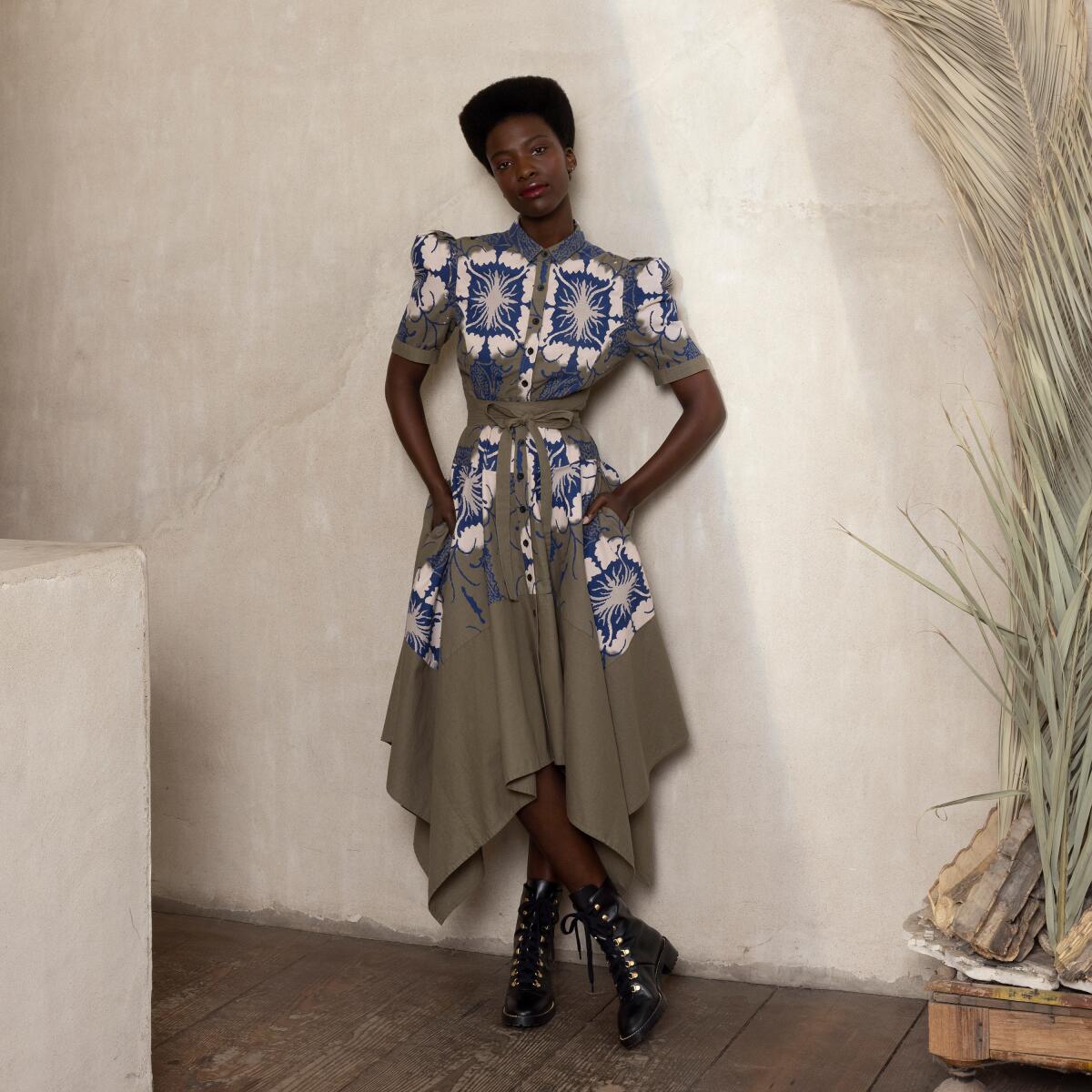
The runway look was the more structured of the two, a long-sleeve mixed-fabrication coat dress that nipped in at the waist. It consisted of the jacquard rug reproduction fabric paired with pieces of an upcycled olive drab army blanket and a blue naval officer’s coat, the brass buttons from which were repurposed to fasten the front and the belt. One of those florals (exploded and multiplied via computer) carried over to the accessible look, a button-front muslin shirtdress printed with the pattern and then overdyed olive drab. The fabric choice, the shorter sleeves and the tie-waist wrap belt gave it a breezier — but equally breathtaking — look. Sure, similar mashups have been done before (Alexander McQueen and Greg Lauren are two brands that come to mind), but Graham put his own spin on it and the result was two looks that easily could have walked right off the runways of Paris or New York. And both hinted at a deeper backstory of life, death and rebirth.
“It’s about redemption,” Graham told the judges at the end of the episode. When he was announced as the winner moments later, it was hard not to see it as a redemption of sorts for the designer as well. With Graham’s shirtdress headed to Amazon, Lendrell Martin was headed home, the first casualty of Season 2.
The takeaway: Graham’s vintage-inspired, puff-sleeved shirtdress with a handkerchief hem ($79.90) serves up exactly what customers are currently looking for — comfortable, easy-wearing clothes with a DIY vibe and a backstory just deep enough to create a meaningful connection. The result is rug-dress redemption for him — and comfort food on a clothes hanger for the rest of us.
L.A. Times TV editor Matt Brennan interviews ‘Making the Cut’ and ‘Project Runway’ star Tim Gunn about his mentorship style.
Episode 2: Rocks, sand and resortwear
The second episode, which was supposed to focus on resortwear looks, turned out to be more about the power of social media. That’s because the judges (including guest judge Prabal Gurung) were split between two potential winners — London-based Joshua Scacheri and New York-based Andrea Pitter — and the ultimate decision was left to a group of influencers who work with Amazon’s fashion website The Drop.
Scacheri, an Australian-born designer with a penchant for pops of color, created a bold, blocky pattern in yellow, purple and blue inspired by the rocks, sand, surf and telephone lines (yes, telephone lines) he spotted during a trip to Will Rogers State Beach. His runway look consisted of a pair of knee-length printed silk shorts in the pattern, worn with a one-button shawl-collar blazer in bright blue with a sheer mesh back panel. (At Gunn’s urging, Scacheri had wisely switched from his original color choice — a shade of seafoam green he’d spotted on a lifeguard tower.) His accessible look used the same pattern in an easy-breezy pool cover-up-/kimono layered over a mesh top and worn with a pair of bright yellow, high-waisted, drawstring trousers with legs cut so voluminous and billowy the model seemed almost to be wearing a skirt.
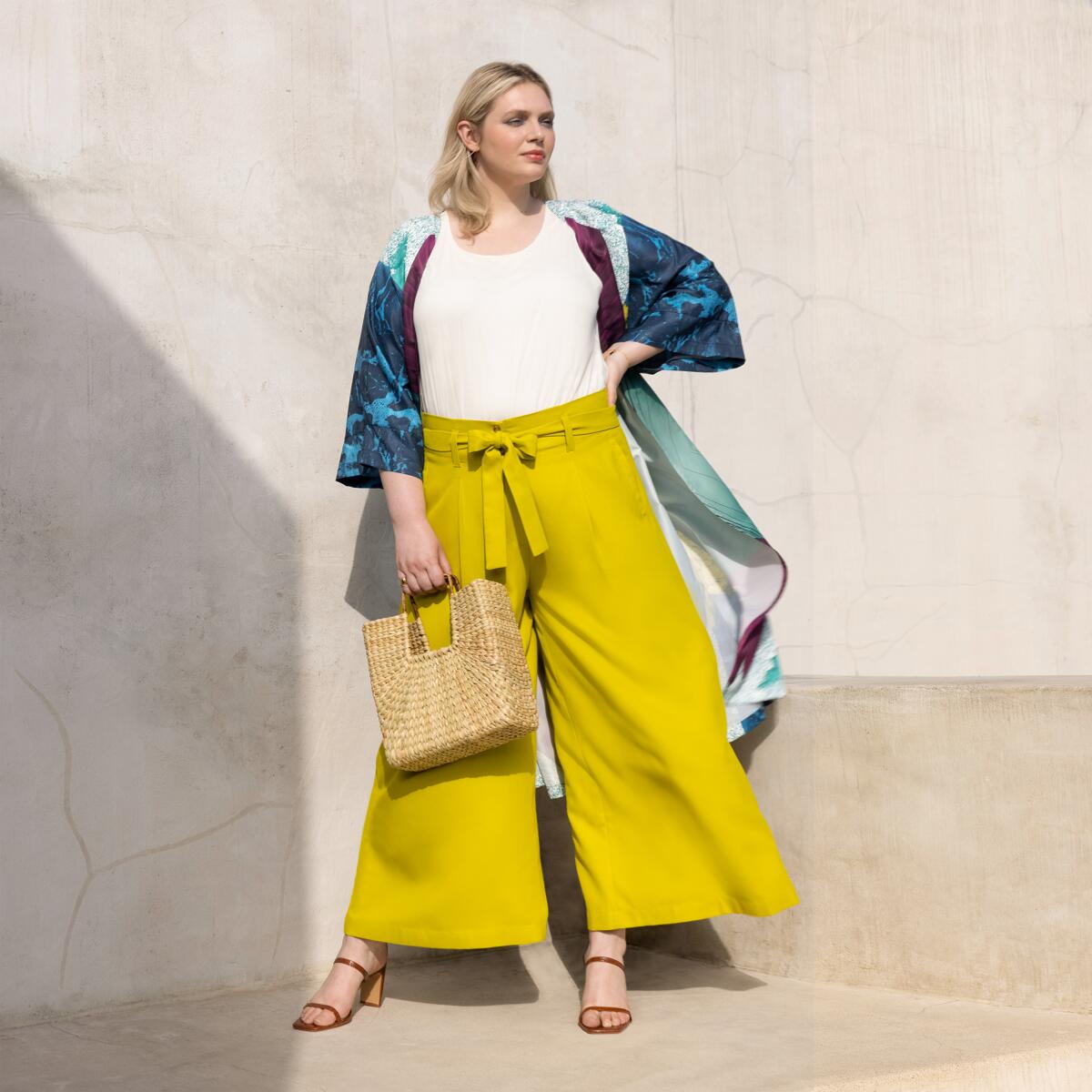
Pitter, a size-inclusive bridalwear designer based in Brooklyn, made an equally strong showing with a swimsuit and chiffon pool coverup for her accessible look and a curve-hugging, one-shoulder, knee-length dress for her runway one, both in versions of an abstract red-and-black pattern she’d designed that fell somewhere between branching coral, animal print, and tie-dye meets Rorschach inkblot.
However, the challenge also included having each designer photograph their on-model looks as they might appear in a social media post, and having those images judged by the aforementioned social media influencers. On that count, Pitter, who photographed her looks adjacent to a focus-pulling piece of lawn furniture, placed second to Schacheri, whose models posed in front of a reflective window.
The takeaway: Two of the three pieces of Schacheri’s winning runway-to-retail look — an ivory mesh tank top ($29.90) and a pair of high-waisted, wide-legged chartreuse stretch crepe pants ($64.90) — looked comfy if cookie-cutter. But the piece that popped with personality — the kimono-meets-pool-robe ($64.90) — is beachy keen resortwear with an L.A.-inspired twist and well worth shelling out a few clams.
More to Read
The complete guide to home viewing
Get Screen Gab for everything about the TV shows and streaming movies everyone’s talking about.
You may occasionally receive promotional content from the Los Angeles Times.

